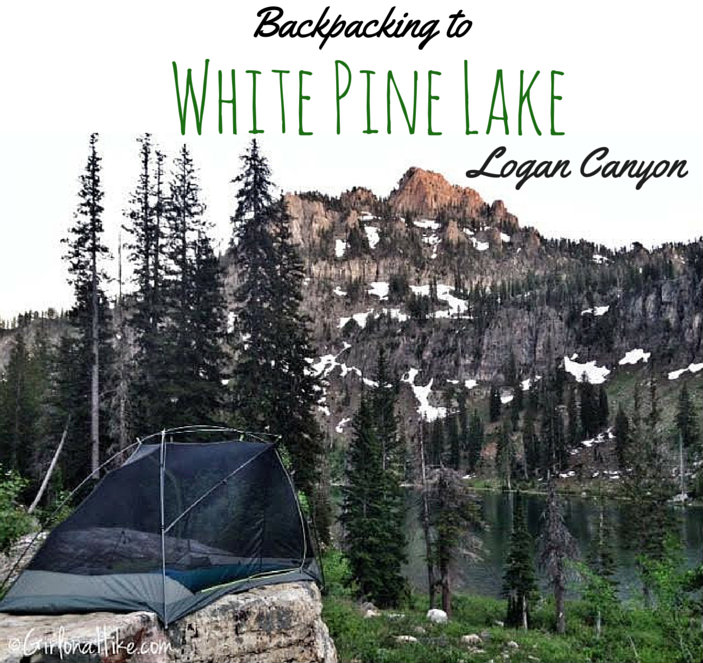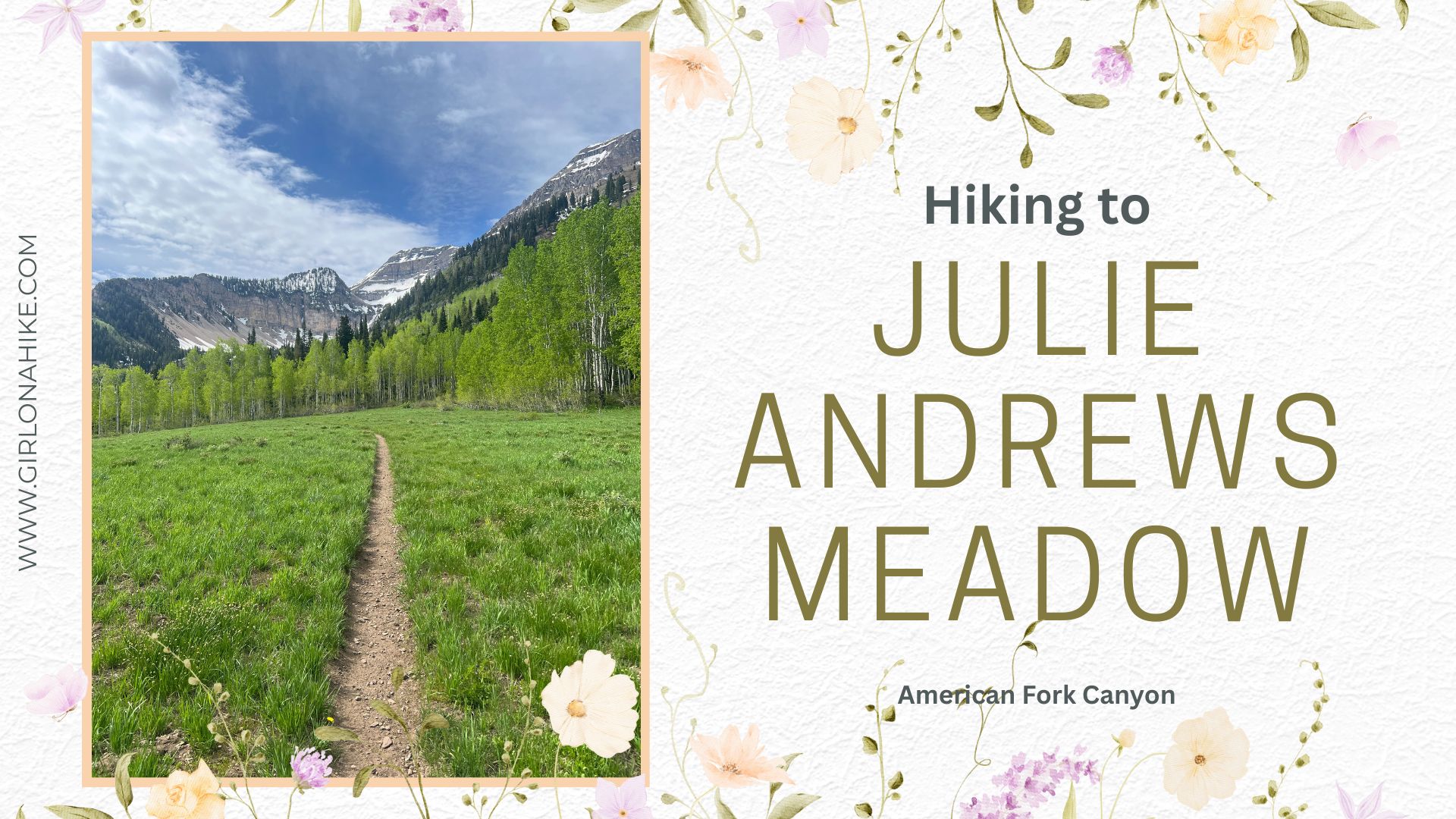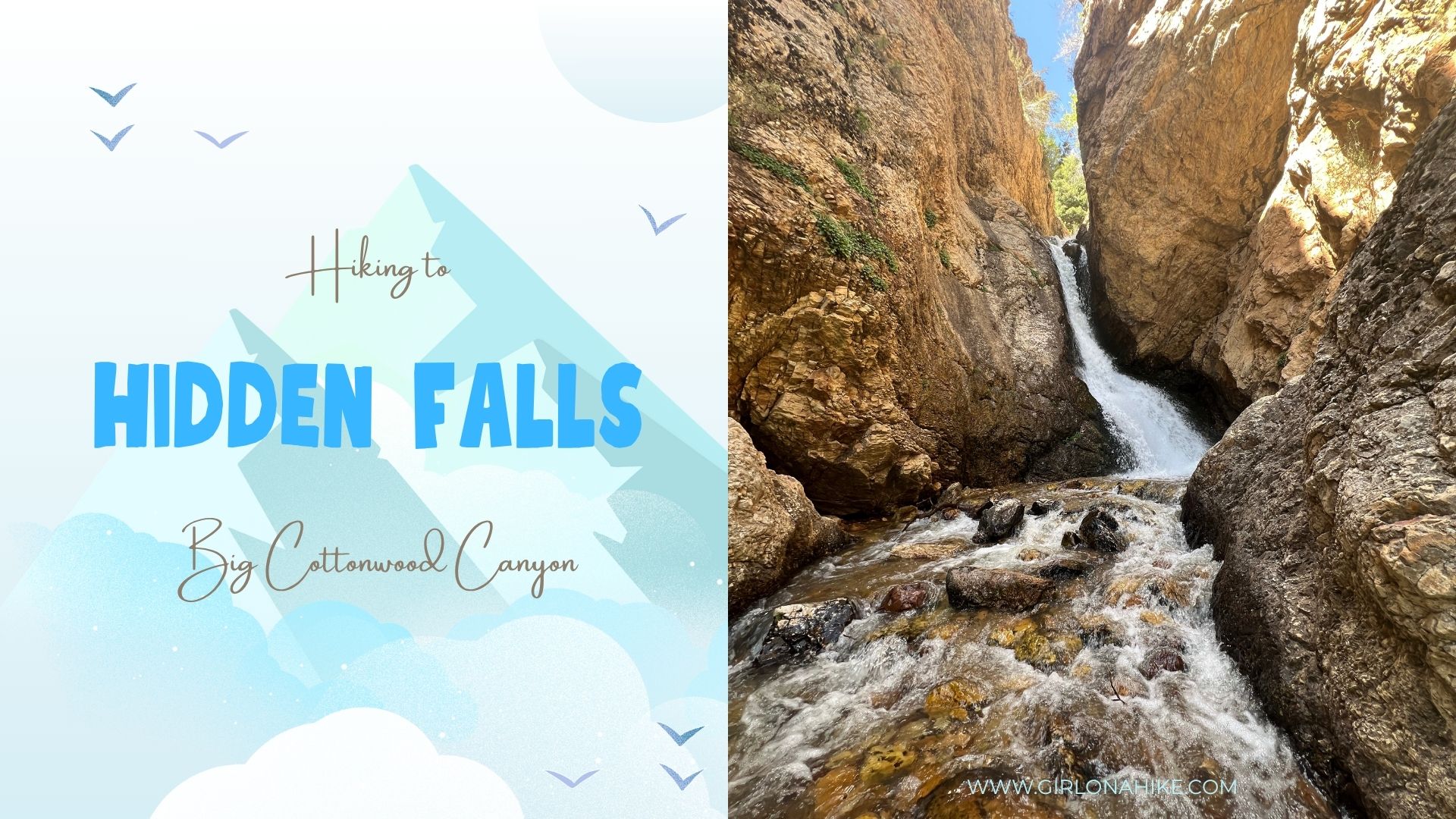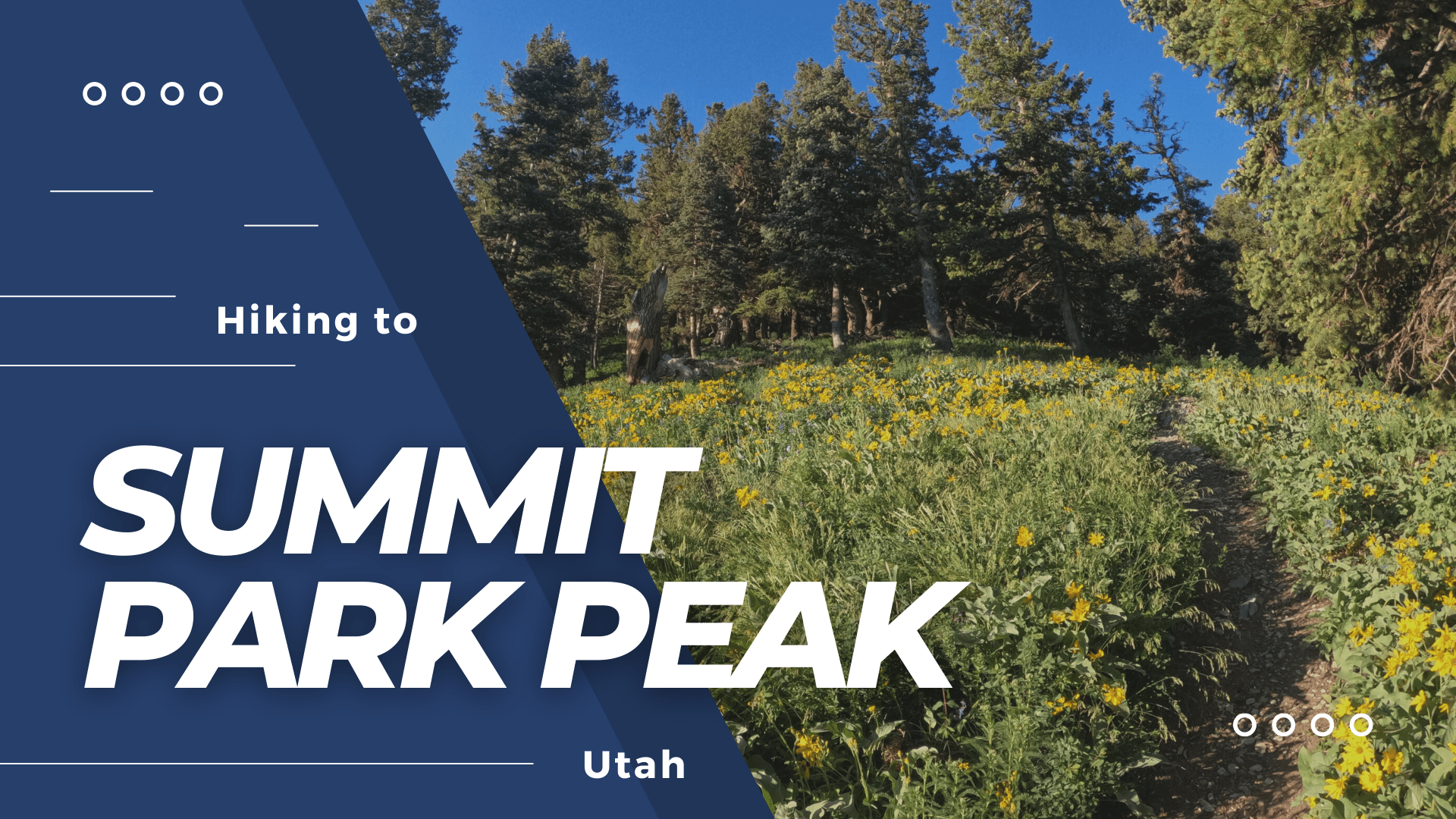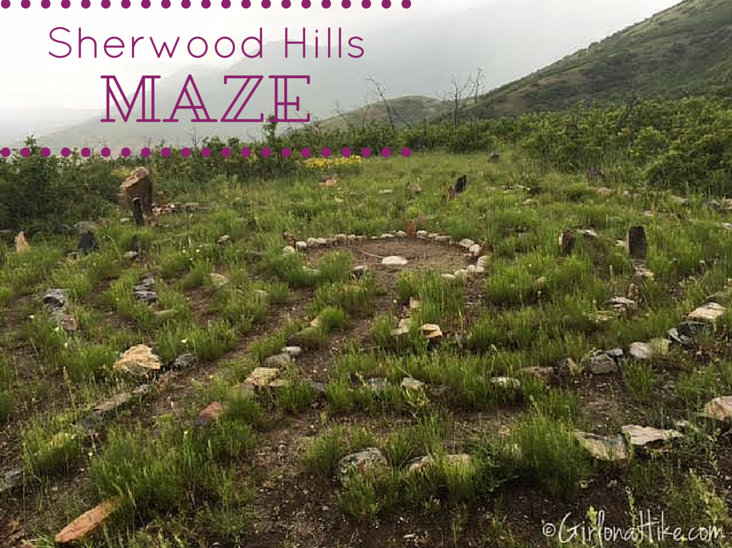

The Sherwood Hills Maze (or Labyrinth) in the foothills of Orem, Utah offers more of a spiritual destination, rather than say, an overlook. This area is not well know, and my friends who live in the area would like to keep it that way. Plus, I really wouldn’t recommend this trail to anyone – there is a lot of overgrowth, bushwhacking is required, you have to be very careful about skirting around the private property in the area.
About
I was able to get a map from a friend, and followed a particular route that allowed me to avoid the private property, but I had to deal with not only the trail issues, but also rain. Let’s just say it was a miserable hike, and leave it at that. Because I don’t recommend the route I took, nor want to fully expose the location of Sherwood Hills Maze, I’m going to leave out directions, trail stats, and the trail map. If you do your own research, you may be able to tell where I am at based on photos.
The Sherwood Hills Maze (sometimes referred to as the Sherwood Hills Labyrinth) is a rock formation created by someone (or something) – these ancient patterns are actually found all over the world; Utah has 17 labyrinth’s. There are many patterns, sharing the overall same design. Their origin is mysterious and their uses are as varied as the patterns are. There are two types of labyrinth. 1) a maze, with repeatedly dividing paths, forcing the traveler to choose among options and 2) a meander, which a single, undivided path and no choices to make other than traveling onward through the winding patterns to an assured goal.
There are several ideas as to why labyrinths exists.
Religious transformation can use labyrinths as a meditation tool or walk it simply for the peace and serenity that comes from being along and contemplating an issue or problem. It can be considered a sacred space in nature.
Personal transformation to focus your thoughts on a question or concern. You may walk with a quiet mind, sensing with wonder. In the labyrinth, as in life, there is no single right way to follow the path.
Psychological transformation to focus the mind and put the walker in tune with the greater reality metaphorically represented by the labyrinth.
Pure entertainment is the last possible thought as to why they exist.
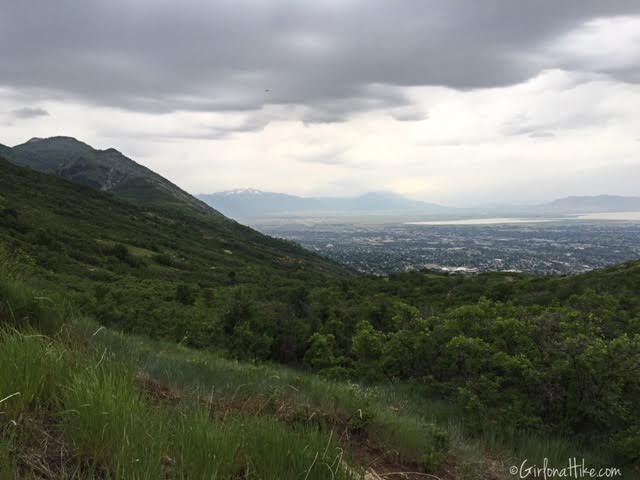
As I started my hike, dark clouds loomed in the area. I knew I would get a little wet, and I was ok with that. I was not prepared for a downpour.
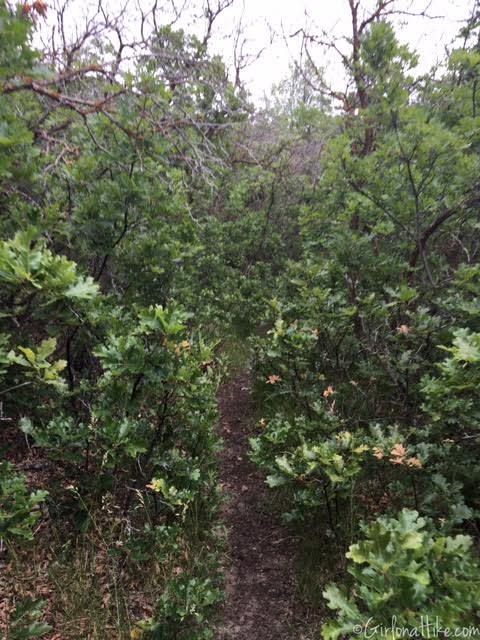
The trail was lined with low brush – the kind that tears up your legs if you wear shorts (which I was). By this point there was a steady mist and I had little cuts all over my legs.
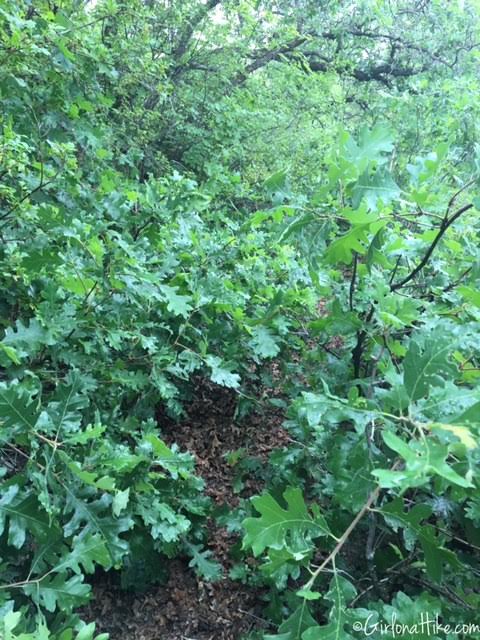
I had to do a lot of route finding, as you can tell that the “trail” was almost impossible to see. This is what most of my time hiking looked like.
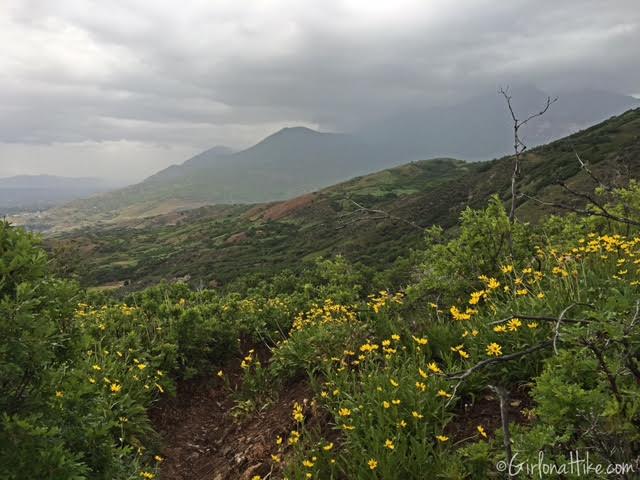
Finally I got to a spot where the trail opened up, and I was able to see where I was. Even darker clouds is the distance.
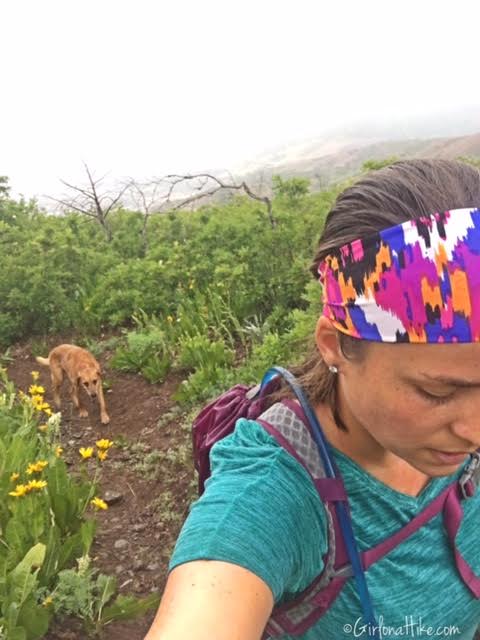
About halfway into my hike the rain started coming down heavily, in sheets. I tried to keep my head down to protect my face. You can see behind me that the sky was now white, and socked in with rain. Charlie didn’t seem to mind, but I was not happy. Everything was soaked.
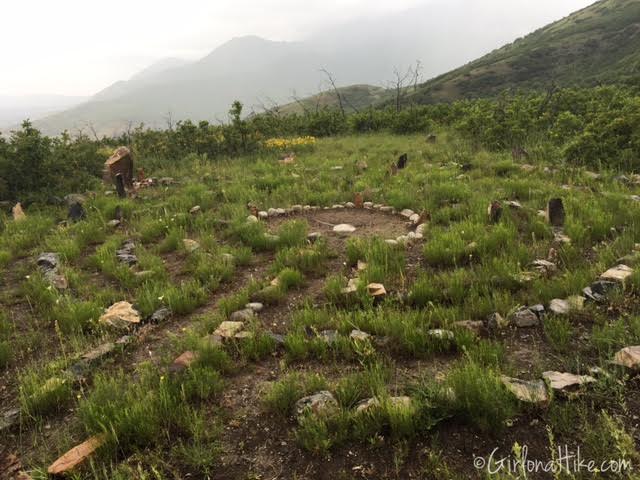
Finally after an hour of hiking in the rain, bushwhacking, route finding, and skirting around the private property, I came upon my destination.
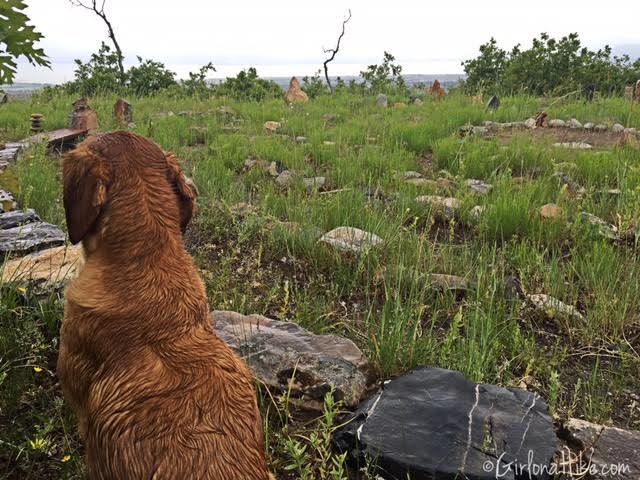
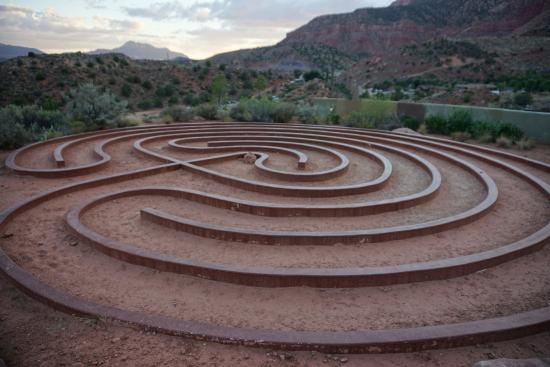
Obviously this is not where I hiked it, nor my photo. It’s another type of labyrinth in Utah (hint, near Zion NP), made of steel beams. This shows what labyrinths look like a little better without the grass.




